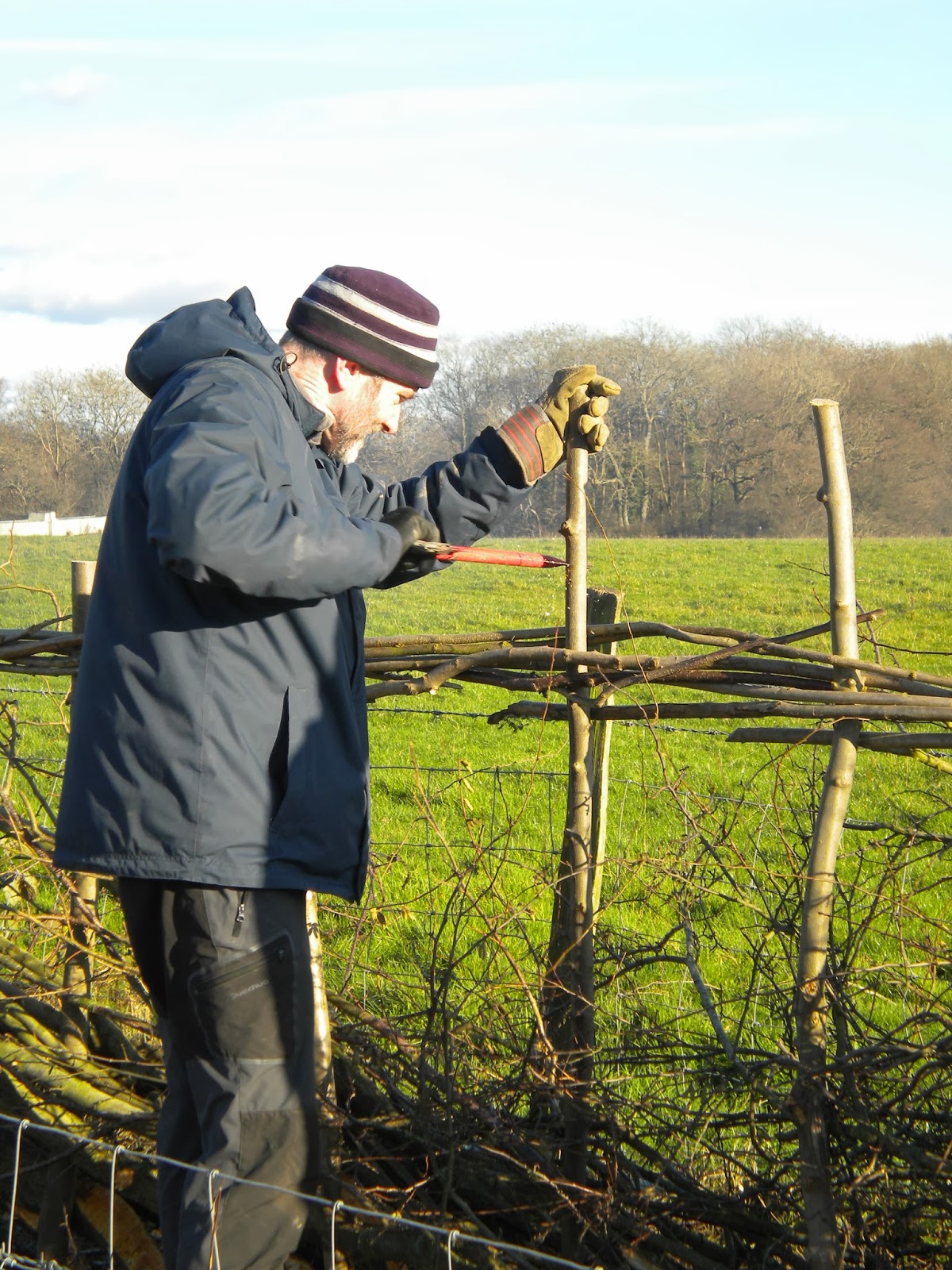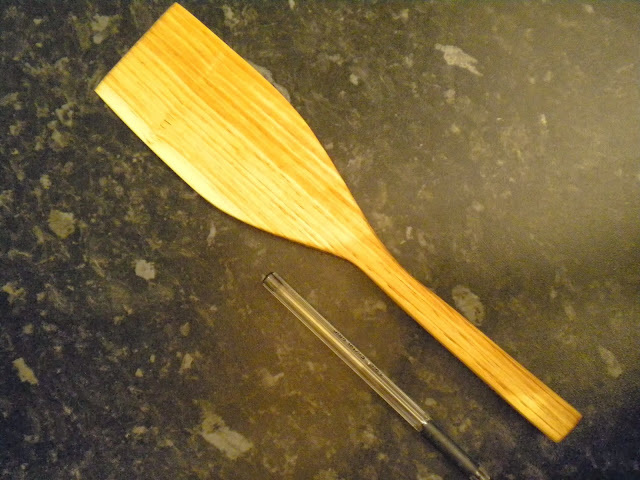To me, they are one of the elements intrinsic to the English countryside.
Hedgelaying then is the traditional means of maintaining hedges.
For the sake of time, I'll direct you over to my blog post from last time pertaining to hedges and hedgelaying...
http://myverygreatadventure.blogspot.co.uk/2012/02/hedge-laying-workshop.html
I included a bit of history and a bit of "how to".
In my last hedgelaying workshop, I was busy and didn't get to take many pictures. This time around, I wasn't actually participating, so I took lots of pictures.
Essentially, we were laying the hedge along the same hedgerow as last time, just a bit further along. There has been one section of hedge layed since, between where we ended in 2012 and where we started this year.
Without further adieu...
The initial length of hedge (far left in photo to just before the tree in middle of hedge-to the right in the picture) was done in 2011 sometime, by a group of boys from Tonbridge School. If you look closely you can see there is alot of new growth on the top of that first section.
So. In my previous workshop (2012) we started about 8-10 feet left of that tree (with the few leaves at the right of the photo)...
and went along, behind the watering troughs
to somewhere around the center of the photo below...
and this years group picked it up from there, or rather... layed it down.
Here they are in teams of two!
Pleaching and laying the hedge, keep in mind, this is Hawthorn -a commonly used species for hedges (and hedgerows in general, even in Vermont), as the thorns create additional incentive for animals to stay on their own side of the hedge- leather gloves highly recommended!
Next up, staking. John gives a demo on pointing the stakes... and some awesome tips for various way to use the bow saw for sawing off the top of the stake.
I have to say, John has a wealth of knowledge, and is adept at using both his words and demonstrations to help you understand what you are doing, or what you are supposed to be doing. His tips on how to use a tool, or hold a tool are invaluable really.
Thing is, some folks, like me, have to see/hear/do things multiple times before the light bulb goes on. A light bulb went on for me during this workshop pertaining to putting a point on a stake that has a curve in it.
Granted, the brightness of that light bulb has dimmed somewhat in the last couple weeks... but, at least it went on, right?
One of those invaluable John Waller tips. Tip #55
3 ways to cut using the bow saw:1) hold the wood still and move the saw... this is most commonly how we tend to work with it, but you can also
2) hold the saw stationary in a horizontal position with one hand and move the wood or
3) step on the saw to hold it stationary in a vertical position, grasp and move the wood with two hands...
like JW is doing in this next picture... I never thought of this!
Pointing and trimming stakes...
Staking the hedge...
What did I do all day? Well, I took pictures, helped keep the fire going with all the offcuts, talked, threw sticks for Arthur (who was bored), made tea, talked, took pictures...
Even a small fire can put off alot of heat...
Arthur needed a little nap...
How I did it I'm not sure, but somehow I managed to not get any pictures of the binding being done.
:-(
Here's the whole crew, standing in front of their completed hedge.
It was pretty much an idyllic day... These folks were absolutely delightful, every one. There was plenty of laughter and good conversation all day long. Another 100 feet of hedge was layed, carrying on a traditional craft that is century's old. The weather was clear and crisp. The fire was warm. There was tea made from the Kelley kettle. Proper English tea too.
It doesn't get much better than that. Does it?
Life is good.
Closing with a few pictures that Paul (yellow coat, red trousers) sent as he managed to capture the finished product, binding and all. Thanks very much Paul!
It is a thing of beauty. A work of art.
a couple more years worth of hedge left to go... then what John Waller?
I have been sitting... typing... uploading pictures for so long my hands have turned to ice.
I am off for a walk to Tunbridge Wells.
Even if I will be singin' in the rain.
love to all-
susie














































